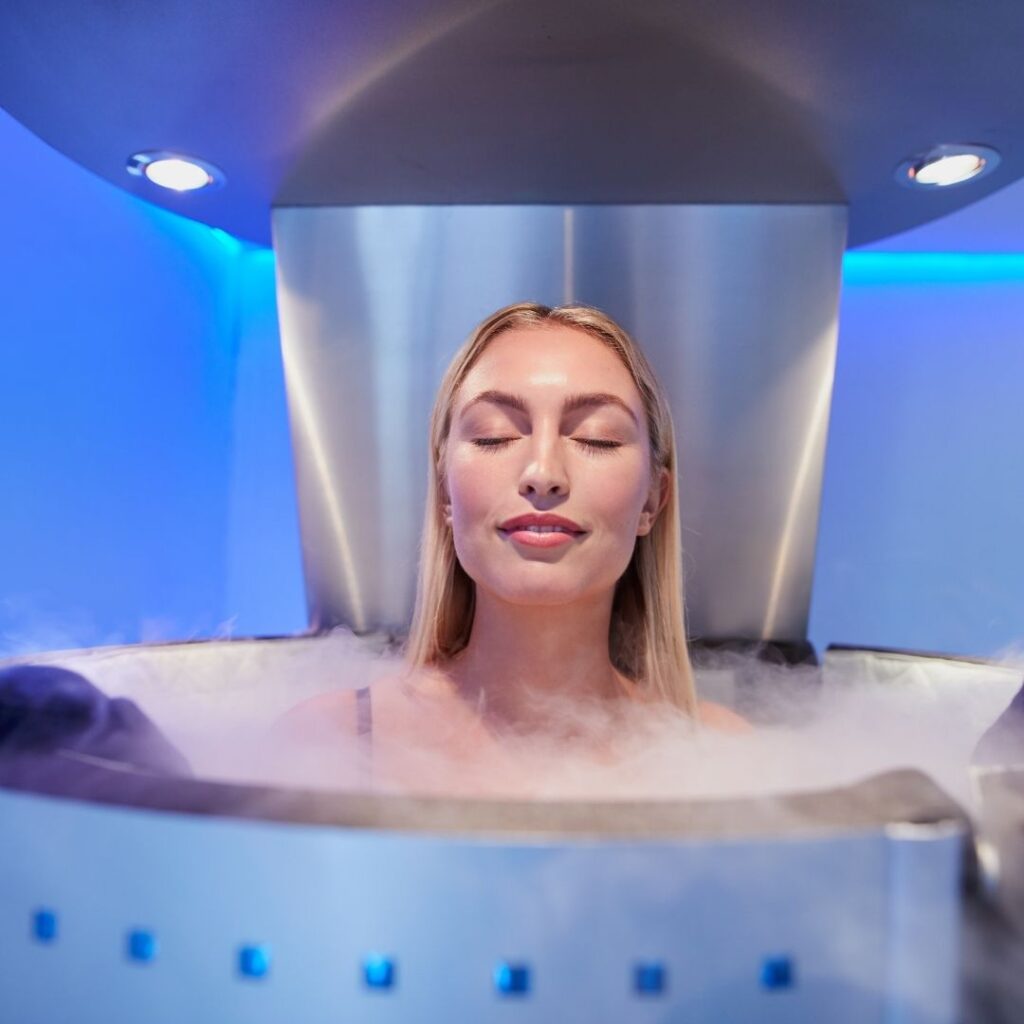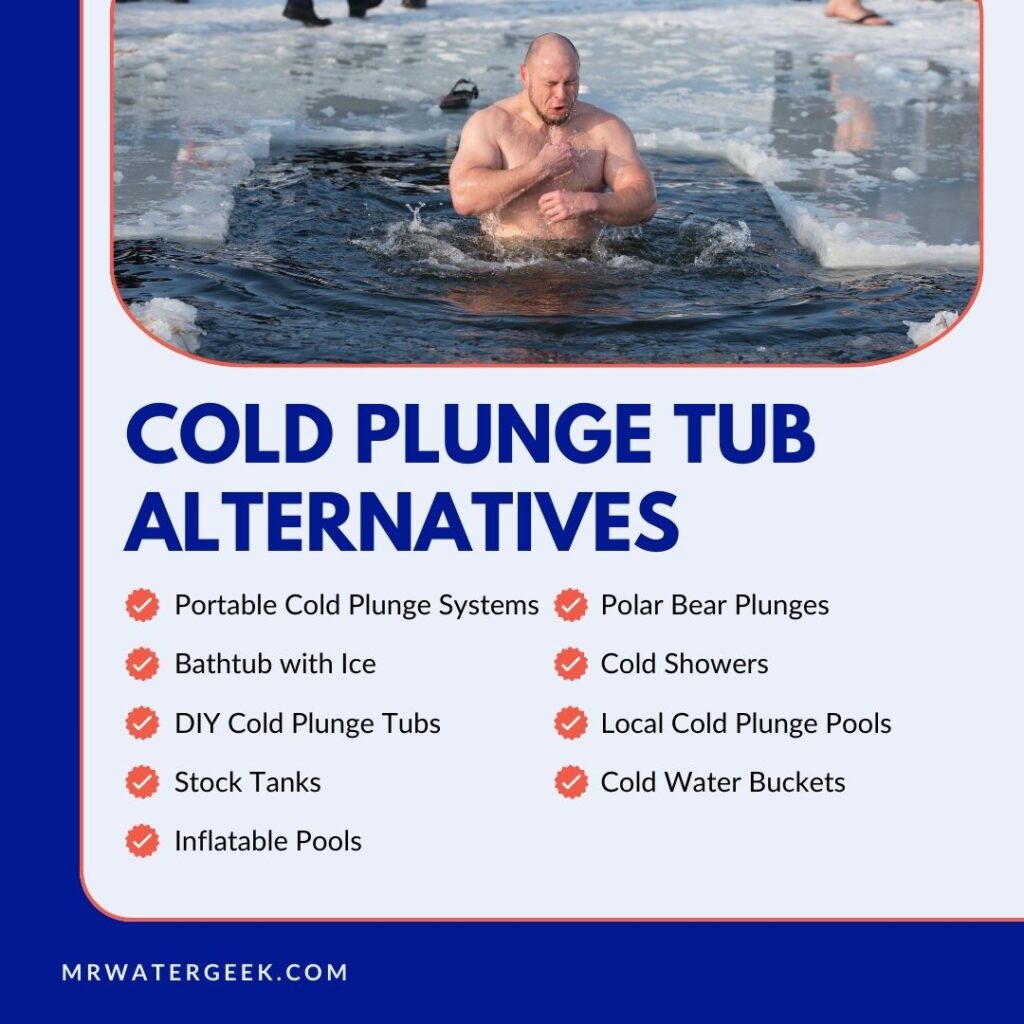9 Cold Plunge Tub Alternatives That Won’t Break the Bank

Cold water immersion is an ancient form of therapy that has experienced a revival in recent years. Research has increasingly demonstrated its wide-ranging health benefits. Practices involving cold exposure have been utilized for centuries across cultures as both a preventive health and rehabilitative technique. In fact, in Scandinavia and Eastern Europe, regular cold plunging in lakes and oceans is still a popular practice for boosting immunity, mood and overall wellness.
As the evidence in favor of cold therapy has grown, so too has the availability of technologies like cold plunge tubs designed to safely and easily deliver its effects at home. Such as those I recommend from Plunge.com and Edge Theory. However, the high upfront and maintenance costs associated with dedicated cold plunge tubs can unfortunately put them out of reach for many. This is why I’m excited to share this round-up of affordable cold plunge alternatives that allow you to tap into the power of cold water immersion without breaking the bank.
Within this post, I’ll outline some different natural and inexpensive methods you can use to introduce therapeutic amounts of cold exposure into your daily routine. With a little creativity, it’s very possible to experience many of the stress-relieving, recovery-boosting benefits of cold therapy without expensive specialized equipment. If you want to learn more about cold plunges, be sure to check out my post on the benefits of combining sauna and cold plunges.

Cold Plunge Tub Alternatives: What You’ll Gain From This Post
Learning what a cold plunge tub is and how it works can help you find a suitable alternative that can deliver similar results. In this post, I’ll guide you through various alternatives to cold plunge tubs, explaining how each one works, how similar they are to a cold plunge tub, and what I like about each option. By the end of this post, you’ll have a range of options to choose from for your cold plunging needs.

What is a Cold Plunge Tub EXACTLY?
A cold plunge tub is a specially designed tub that allows for cold water immersion. These tubs are typically equipped with features that make them unique from regular tubs, such as advanced sanitation systems, temperature controls, and insulation to maintain cold temperatures. Cold plunge tubs work by allowing the user to immerse themselves in cold water, which can help reduce muscle soreness, improve muscle recovery, and offer other health benefits.
Unlike regular tubs, cold plunge tubs are specifically designed to maintain low water temperatures for extended periods, making them ideal for those who want to practice cold plunging regularly.

9 Alternatives To Cold Plunge Tubs
Portable Cold Plunge Systems
There are portable cold plunge systems designed to offer the benefits of cold water immersion without the need for a permanent installation. These systems often come with temperature controls and are easy to set up and take down, making them a convenient option for those who travel or have limited space.
Here are some examples of portable cold plunge systems, ranging in price from $75 – $600. Keep in mind that the price will most likely reflect quality and ease of use.
- Premium Portable LED Light Stripice Ice Bath Tub
- Foil Ice Bath Tub XL
- SereneLife Inflatable Insulated Cold Plunge Tub
- ICEBREATH Portable Tub
How It Works: Set up the portable system according to the manufacturer’s instructions, fill it with water, and use the built-in controls to cool the water.
Effectiveness: Offers a similar experience to dedicated cold plunge tubs with added portability.
Pros: Portable, easy to set up, and often includes temperature control.
Cons: Can be more expensive than the DIY options on this list, and will require a power source.
Bathtub with Ice
Using your regular bathtub with added ice can be a simple and effective way to practice cold water immersion. Fill the tub with cold water and add ice until the desired temperature is reached. This method is convenient and makes use of existing resources.
How It Works: Fill your bathtub with water, add ice to cool it down, and immerse yourself for 10-15 minutes.
Effectiveness: Effective for cold water immersion if you can achieve and maintain the correct temperature.
Pros: Uses existing resources and is easy to set up.
Cons: Requires a significant amount of ice and may not maintain temperature as effectively as specialized tubs.
DIY Cold Plunge Tubs
If you’re handy, you can create your own cold plunge tub at home. Using a large container and a thermometer, fill it with cold water and add ice bags to cool the water. You can use a garden hose to fill the tub, and you can control the water temperature by adjusting the amount of ice added. This DIY approach can be a cost-effective way to enjoy cold water immersion without the expense of a dedicated cold plunge tub.
How It Works: Choose a large, sturdy container, fill it with water using a garden hose, and add ice to achieve the desired temperature.
Effectiveness: Very effective if you can achieve and maintain the right temperature.
Pros: Customizable, inexpensive, and can be set up in your backyard or garage.
Cons: Requires some effort to set up and maintain the correct temperature. Plus, full-body immersion may not be possible all at once.
Stock Tanks
Stock tanks, typically used for livestock, can double as an excellent cold plunge tub alternative. These large, sturdy containers are built to hold water and can be filled with cold water and ice for immersion. They are available in various sizes and are relatively inexpensive compared to dedicated cold plunge tubs. You can even purchase a stock tank cover to keep your ice bath clean.
How It Works: Fill the stock tank with water and add ice to cool it down. You can use a garden hose to make filing easier.
Effectiveness: Very effective if the tank is large enough for full-body immersion.
Pros: Durable, inexpensive, and easy to set up.
Cons: Requires a significant amount of ice and space.
Inflatable Pools
An inflatable pool can be a versatile and affordable option for cold plunging. These pools can be set up in your backyard, filled with cold water, and supplemented with ice to reach the desired temperature. Inflatable pools offer the flexibility of size (as they are much larger than, say, a storage tub) and portability, making them a practical choice for many people. Just make sure you don’t buy a huge pool, as it will be too hard to cool. Instead, choose one around 150 gallons.
How It Works: Inflate the pool, fill it with water using a garden hose, and add ice to cool the water.
Effectiveness: Provides a good cold water immersion experience with the right setup.
Pros: Affordable, portable, and easy to set up.
Cons: May require frequent maintenance, cleaning, and ice addition to maintain cold temperatures.
Polar Bear Plunges
Polar bear plunges are a unique alternative to cold plunge tubs. These involve jumping into a cold body of water, such as a lake or ocean, typically during the winter months. Polar bear plunges can be an exhilarating way to experience cold water immersion, and they offer similar benefits to cold plunge tubs. However, it’s important to note that safety should always be a priority when participating in polar bear plunges and that you won’t find a good location to perform them everywhere.
How It Works: Find a safe, clean body of water with cold temperatures. Enter the water gradually to avoid shock.
Effectiveness: Offers similar benefits to cold plunge tubs, including improved circulation and reduced muscle soreness.
Pros: Free and accessible if you live near a body of water.
Cons: Requires access to a natural water source and can be dangerous without proper precation.
Cold Showers
Cold showers are perhaps the most accessible and inexpensive alternative to cold plunge tubs. Simply turn on the cold water and expose your body to the cold temperatures for a few minutes. Cold showers can help improve circulation, reduce muscle soreness, and provide a quick way to experience the benefits of cold water immersion. Studies have shown that regular cold exposure through cold showers can lead to improved mental and physical health.
How It Works: Turn on the cold water and gradually lower the temperature. Stand under the cold water for 3-5 minutes, or longer.
Effectiveness: While not as intense as full immersion, cold showers still offer significant benefits.
Pros: Easily accessible and requires no special equipment.
Cons: Less intense than full-body immersion and doesn’t provide that “shock”.
Local Cold Plunge Pools
Check your local area for cold plunge pools or facilities that offer cold water immersion services. Think of your local YMCA or clubhouse. These facilities typically have specialized cold plunge tubs or pools that are maintained at the ideal temperature for cold plunging. Using a local facility can be a convenient way to enjoy cold water immersion without having to invest in your own equipment.
How It Works: Locate a nearby facility, schedule a session, and use their cold plunge pool under professional supervision.
Effectiveness: Highly effective, with the added benefit of professional maintenance and sanitation.
Pros: No need to invest in personal equipment, and the pools are professionally maintained.
Cons: May require a membership or fee and availability / quality can vary by location.
Cold Water Buckets
A cold water bucket is a very simple and inexpensive way to achieve cold exposure. You can use a large bucket filled with ice water and immerse parts of your body, such as your feet or hands, for localized cold therapy. This method is particularly useful for targeting specific areas of muscle soreness or inflammation.
How It Works: Fill a large bucket with cold water and ice. Immerse the desired body part for 10-15 minutes.
Effectiveness: Effective for localized cold therapy and can help with muscle recovery.
Pros: Very inexpensive, easy to set up, and good for targeting specific areas.
Cons: Limited to localized immersion and may not provide the full-body benefits of a cold plunge tub.
Don’t miss out on the benefits of cold plunging; use these alternatives instead!
Overall–we now know that cold plunging offers a range of health benefits, from reduced muscle soreness to improved muscle recovery. While cold plunge tubs are a popular way to experience these benefits, they can be expensive for the average person.
Fortunately, there are several alternatives available, from smaller, portable ice bath systems and polar bear plunges to DIY cold plunge tubs and cold showers. Each of these alternatives offers a unique way to experience cold water immersion and its associated health benefits.
So whether you’re filling a tub with bags of ice, jumping into a stock tank or swimming pool, or simply taking a cold shower, you can enjoy the benefits of cold plunging without breaking the bank. Don’t forget to check out the links in this post to shop for the best products and equipment for your cold plunging needs!
For more information on beneficial water therapies and all things around benefits of water, stay tuned to my blog. I’m always available to give recommendations, reviews, and health information around water.
Stay cool & stay hydrated,
Shashank Varma (Mr. Water Geek)
